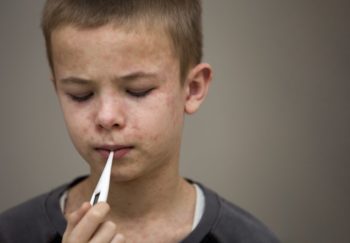Since it came out, the Snoo bassinet has been a conversation starter. Now, the U.S. Food and Drug Administration (FDA) has approved the Snoo as a medical device. Needless to say, the Snoo is once again a topic of debate.
The Snoo Smart Sleeper claims that it can give parents more sleep while keeping babies safe. And even though the price tag is eye-watering, many parents swear by it.
The Snoo FDA classification as a medical device is the first of its kind. But is it really the safest sleep device on the market? Here’s what that classification means for you, and how to decide what’s right for your family.
The New Parent Sleep Struggle Is Real
Everyone knows sleep’s a struggle when you have a newborn. It’s a running cultural joke. The deep eye circles and yawns have been showcased on just about every sitcom that’s had more than 2 seasons. But the real cost is more dire.
In a baby's first year, most new parents will get a little less than 5 hours of sleep a night. At this rate of sleep deprivation, new parents increase their risk of multiple chronic diseases. One of the more insidious being postpartum depression.
They also increase their risk of other health concerns. Driving after 4 hours of sleep is equivalent to having a blood alcohol content 1.5 times the legal limit. When new parents don't get enough sleep, it’s dangerous for all of us.
Sudden Unexpected Infant Death
Every year, about 3,400 infants die of sudden unexpected infant death (SUID). While SUID includes deaths from unknown causes, it also includes infants who die from suffocation or strangulation in bed.
In 2020, there were 3,356 unexpected infant deaths. Of those, 905 were due to accidental suffocation. From co-sleeping, an unsafe sleeping environment, or parents falling asleep with their babies in an unsafe location like the couch.
Sleep deprivation isn’t more conducive to newborn care than it is to driving.
Back to Sleep
Unexpected infant deaths began dropping in 1994, when the “Back to Sleep” campaign began. By teaching parents to place their child in an empty crib or bassinet on their back, lives were saved.
These guidelines were updated again recently, with the help of 2 UVA Children’s doctors: Rachel Moon, MD and Fern Hauck, MD.
The full guidelines are worth reading, but here’s the short version:
- Babies should sleep alone
- On their back
- In an approved sleeping device
- With no soft items in the crib area
- In the same room as their parents
So, Why Is the Snoo Different?
In the past, we’ve told people to be wary of sleep devices. And that’s still true. Gimmicks, like weighted sleep sacks, can be worthless at best and dangerous at worst. They also encourage complacency.
Vigilance and strict adherence to the guidelines are the best ways to prevent SUID. But as mentioned above, these guidelines can be tough.
Where the Snoo excels is making it easier to follow the safe-sleep guidelines.
How Does a Snoo Work?
What makes the Snoo different is the Snoo Sleep Sack. This sack functions as a compact swaddle. It has two velcro straps that go over the arms, and a center trap that goes between the legs. Then the sack zips up.
Attached to the Snoo Sleep Sack is an elastic band. This band attaches to specially designed clips. The Snoo crib will not activate until this band is attached.
Once activated, the Snoo crib gently rocks the baby and plays white noise. Honestly, my baby’s usually out in under five minutes. If she starts to wake, the Snoo increases the rocking and the white noise.
No More Resorting to Risky Sleep Tactics
So, basically, the Snoo makes it impossible not to follow the safe-sleep guidelines. The baby has to sleep on their back. But it also provides the soothing that parents have sought out in bouncers, swings, and long car rides (all of which are not approved for safe sleep).
The swaddle provides comfort, but can’t come loose and become a suffocation hazard.
It combines all of the risky things parents have resorted to to get their babies asleep, but removes the risk.
And it’s small enough to nest comfortably next to the parents’ bed.
What Does the Snoo FDA Classification Mean?
As of April 3, 2023, the Snoo Smart Sleeper is a Class II medical device. The Snoo had to pass a huge number of tests to get this classification. No other sleep device has been able to qualify. This could mean more insurance companies agreeing to cover it or companies willing to rent it for employees.
The FDA approval is NOT saying that the Snoo is a magic bullet for preventing SUID. Or even that it's safer than simply putting your baby on their back in a crib.
Having a Baby?
Find support before, during, & after birth at UVA Health.
Is the Hype Worth the High Price?
For parents who need extra sleep, the Snoo can be helpful. Though the price tag is steep, there are rental programs available.
In terms of safety, all the Snoo really does is make it easier to follow the safe sleep guidelines. As long as you’re following those, your baby will be just as safe as one sleeping in the Snoo.
If you’re struggling to get enough sleep and follow safe sleep guidelines, a bedside bassinet may be the perfect solution. “Putting a separate sleep surface next to the parents’ bed makes it easier to bring the baby into the parental bed for comforting, and then return them to a safe space after,” says Hauck.
Find more suggestions for what to do when baby won’t sleep.


